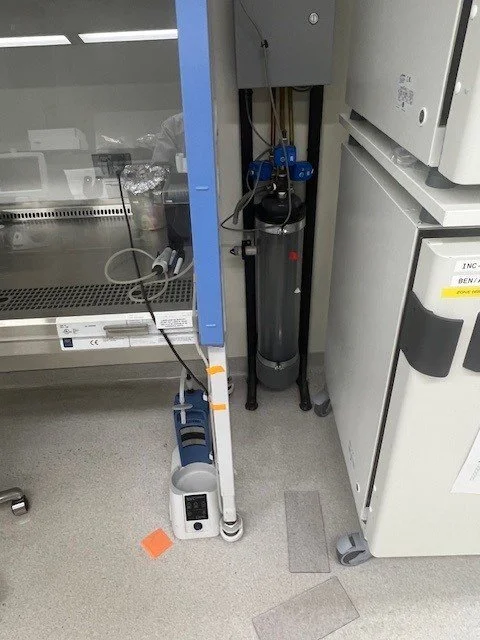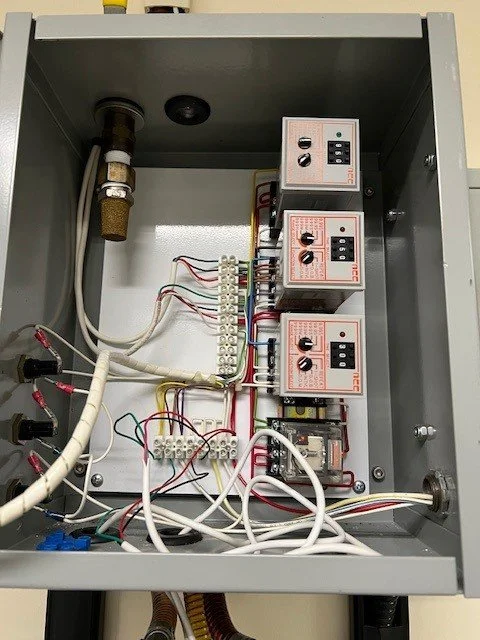The Original Waste Sterilization System
Trouble shooting System Engineering: Tissue culture hood local collection vessels.
A collection vessel (version 1) was supplied on the rear wall behind the sterile hood to replace the manual vacuum system shown at bottom center. (orange diamond)
Issues with the manual system were:
Frequent need to empty during heavy use of the sterile hood
Very slow removal of liquid waste when the removal tube was filled - too small diameter tube for fluid viscosity (shown front RHS inside hood).
Issues solved with Version 1 vessel and control system:
Fast waste evacuation through the ceiling and automated disposal (requires scientist to press “empty” button)
Local treatment to prevent contamination (is manual)
Problems with the supplied Version 1 collection Vessel:
Reflux of contaminated material into the Vacuum inlet tube (see discoloration of the Vac inlet line)
liquid material enters the overhead lines and deposits solids that eventually clog the system
local treatment to prevent contamination relies on scientists remembering to add bleach or simple green
Scientists forget to press empty button system sensor added to alarm but doesn’t prevent reflux into Vac pipe.
Control buttons are fragile (empty here has broken), require maintenance, and are sometimes forgotten resulting in aspirating waste into the overhead vacuum pipes, leaving residue that clogs and require complete replacement in the plenum space (expensive repair).
Ladder Logic PLC relay controller requires expert facilities staff to repair and extensive training for new staff (turnover expected).
Central lab collection vessel (Version 1) for waste treatment and disposal
Issues solved with Central Collection Vessel and automated disposal.
automates waste disposal to sewer and prevents sewer gas backflow into local vessel systems
connects to multiple local collection vessels
Problems with the Version 1 Lab Disposal Vessel.
No forced contact time for treatment.
No automated sterilant added if scientists neglect to do this
only one local system can empty at a time to prevent cross flow of fluids
must be wired to each of the local systems to prevent simultaneous emptying of local systems.
design uses timer relays cant really be flexible and has no sensor inputs.






